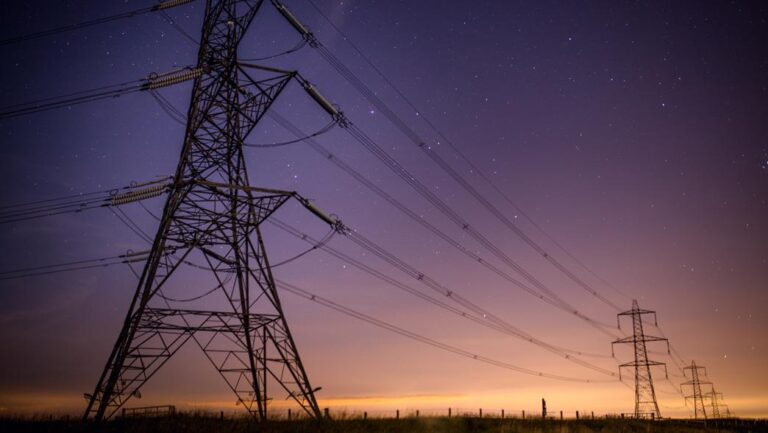The term “1 unit of electricity” is commonly used to refer to 1 kilowatt-hour (kWh) of electrical energy. A kilowatt-hour is a unit of energy that represents the consumption of one kilowatt of power for one hour. It is the standard unit for measuring electricity usage on utility bills.
In practical terms, if you have a device with a power rating of 1 kilowatt and you use it continuously for one hour, it would consume 1 kilowatt-hour of electricity. Similarly, a device with a power rating of 500 watts (0.5 kilowatts) running for 2 hours would also consume 1 kilowatt-hour.
Utilities often bill customers based on the number of kilowatt-hours consumed, and the cost per unit may vary depending on the region and the specific rate structure in place.
How is a kilowatt-hour defined, and what is its relationship to power?

A kilowatt-hour (kWh) is a unit of energy commonly used to measure electricity consumption. It is defined as the amount of energy consumed when a device with a power rating of one kilowatt (1 kW) operates for one hour. The kilowatt-hour is a derived unit of energy in the International System of Units (SI), where 1 kilowatt-hour is equal to 3.6 million joules.
To understand the relationship between power and energy, it’s essential to know the definitions of both terms:
Power (P): Power is the rate at which energy is consumed or produced. It is measured in watts (W) in the International System of Units. One watt is equal to one joule per second.
P= t/E
Where:
P is power in watts (W),
E is energy in joules (J), and
t is time in seconds (s).
Energy (E): Energy is the capacity to do work. It can exist in various forms, such as electrical, mechanical, thermal, etc. The unit of energy is the joule (J).
E=P×t
Where:
- E is energy in joules (J),
- P is power in watts (W), and
- t is time in seconds (s).
Now, when you want to measure the total energy consumption of an electrical device over time, you can use the kilowatt-hour as a practical unit. For example, if a device has a power rating of 1 kilowatt and operates for 1 hour, it consumes 1 kilowatt-hour of energy.
Energy (kWh)=Power (kW)×Time (hours)
Understanding this relationship is crucial for managing and billing electricity consumption in households, businesses, and other settings.
How can one calculate energy consumption in kilowatt-hours?
To calculate energy consumption in kilowatt-hours (kWh), you need two pieces of information: the power rating of the device in kilowatts (kW) and the time the device is in operation in hours. The formula for calculating energy consumption is straightforward:
Energy (kWh)=Power (kW)×Time (hours)
Here’s a step-by-step guide on how to calculate energy consumption in kilowatt-hours:
Identify the Power Rating:
Find the power rating of the device, usually expressed in kilowatts (kW). This information is often provided on the device itself or in its technical specifications.
Determine the Operating Time:
Determine how long the device operates in hours. This could be based on your observation or information provided by the device’s user manual or specifications.
Apply the Formula:
Time (hours)
Energy (kWh)=Power (kW)×Time (hours) to calculate the energy consumption.
Example:
If a device has a power rating of 1.5 kW and operates for 4 hours, the energy consumption is:
Energy (kWh)=1.5kW×4 hours=6kWh
Interpret the Result:
The result represents the total energy consumed by the device in kilowatt-hours. This value is often used for billing purposes by utility companies or for tracking energy usage in various applications.
Remember to use consistent units throughout the calculation. If the power is given in watts, convert it to kilowatts by dividing by 1000 before applying the formula. Additionally, ensure that the time is in hours.
This calculation is useful for estimating energy consumption and managing electricity usage efficiently. It can be applied to individual devices or the overall electricity consumption of a home or business.
What is the billing basis for electricity, and how do regional variations affect pricing?

Electricity billing is typically based on a combination of two factors: power consumption (measured in kilowatt-hours, kWh) and, in some cases, the maximum demand or peak power usage. The billing process may also include additional charges, such as fixed fees, taxes, and surcharges. The specifics of electricity pricing can vary globally, and regional variations are influenced by a range of factors. Here are some key aspects:
Energy Consumption (kWh)
The primary component of electricity bills is the energy consumption measured in kilowatt-hours. Consumers are charged based on the amount of electricity they use over a billing period.
Peak Demand (kW or kVA)
Some industrial and commercial customers may be subject to charges based on their peak power demand during a specified period. This is the maximum amount of power drawn from the grid at a given time and is used to determine the capacity needed to support a customer.
Time-of-Use (TOU) Rates
In some regions, especially during peak demand periods, utilities may implement time-of-use pricing. This means that electricity rates vary based on the time of day, with higher rates during periods of higher demand.
Fixed Charges
Consumers may also face fixed charges that cover the cost of maintaining the electricity infrastructure, meter reading, and other operational expenses. These charges are often independent of actual energy consumption.
Taxes and Surcharges
Taxes, regulatory fees, and surcharges may be added to electricity bills. These can vary depending on local regulations and government policies.
Regional variations in electricity pricing are influenced by several factors:
Energy Sources
The availability and cost of different energy sources (coal, natural gas, renewable energy) can impact regional pricing. Regions heavily reliant on a particular energy source may experience price fluctuations based on that source’s availability and cost.
Infrastructure Costs
The cost of building and maintaining the electricity infrastructure, including power plants, transmission lines, and distribution networks, can vary regionally. Urban areas may have different infrastructure costs compared to rural areas.
Regulatory Environment
Government policies, regulations, and market structures can significantly affect electricity pricing. Deregulated markets may have different pricing mechanisms than regulated ones.
Geopolitical Factors
Political stability and geopolitical factors can influence the availability and pricing of energy resources, affecting electricity prices in a region.
FAQ’s
How many kW is 1 unit?
1 unit is equivalent to 1 kilowatt-hour (kWh).
What is 1 unit in quantity?
In quantity, 1 unit refers to 1 kilowatt-hour (kWh) of electrical energy.
How to calculate electric bill?
The electric bill is calculated by multiplying the power consumption (in kilowatts) by the duration of usage (in hours), giving the energy consumption in kilowatt-hours (kWh).
How much is 1 watt?
1 watt is a unit of power, equivalent to one joule per second.
How many kW is 1.5 ton AC?
A 1.5-ton AC typically has a power consumption of around 5.5 kilowatts.
What is 2000 watts in units?
2000 watts is equal to 2 kilowatts when measuring electrical power.
Final Words
The concept of “1 unit of electricity” demystifies the measurement of electrical energy consumption, revealing it as equivalent to 1 kilowatt-hour (kWh). This standard unit is vital for understanding utility bills, calculated by multiplying the power rating (in kilowatts) by the duration of operation (in hours).
The interplay between power and energy is elucidated, emphasizing the kilowatt-hour as a practical unit for tracking and billing electricity usage. The article provides a clear guide for consumers to calculate energy consumption, crucial for effective management. A

